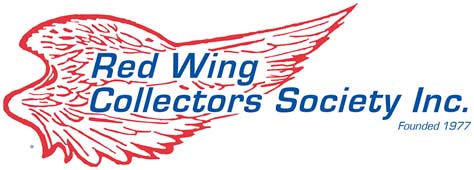There may be a RWCS Chapter near you
Learn more on our Chapters Page.
Membership is only $35 a year and includes six full-color newsletters and exclusive, members only, online content
The RWCS website or the Ask the Experts service will not give specific advice on how to sell your Red Wing Pottery pieces. However here there are several important factors to consider when selling:
1) Speed of sale
2) Time and effort on your part
3) Price expectations
4) Your location (reaching potential buyers)
Here are several ways a person can sell items, along with pros and cons of that method.
a) Online RWCS Website Classified
The RWCS Website now features classified and display advertising page. You can list the description, contact information, and photos based upon the print costs of our newsletter.
b) RWCS Newsletter:
The more then 5,000 members of the RWCS receive a bi-monthly publication as part of their membership. A classified in this publication is very cost effective and would reach a market specifically interested in Red Wing Pottery. The newsletter is published 6 times a year and they are also published on the RWCS Website. One does not need to be a member in order to advertise. Please contact our Newsletter Editor, Rick Natnyski at 414-416-WING (9464) or email at newsletter@redwingcollectors.org for rate information.
Click Here to see current classifieds
c)On line auction (eBay):
Regardless of your location, this is the best way to reach the most potential buyers. Speed of sale and a good price are favorable. But listing items yourself requires significant effort on your part as you must take photos, create the listing (accuracy is imperative), set up billing, pack and ship the item, and deal with any potential problems with the transaction (breakage, non-paying bidders, etc). Cost of shipping can be an issue with large items or numerous pieces.
d) On line auction using a trading partner:
You bring your items to a business that specializes in listing items on eBay. They handle the "time and effort" issues for you but take a cut from the sales price. Results in less work but also less money for the seller.
e) Sell to a local antique dealer:
Location is important here. This is a viable option if you live in an area where Red Wing is widely collected (upper Midwest) but perhaps not so viable in other areas of the country. Selling to a dealer is quick and doesn’t require much effort, but you won’t realize full price because the dealer needs to make a profit on reselling the items.
f) Consignment shop:
Here you retain ownership of the item until it sells. Location is important because you need a shop that will attract Red Wing collectors. Being in an "touristy" area or an area with numerous antique shops helps. Effort required is low, and usually you can set your own price. Speed of transaction can be slow and the shop owner will take a cut from the sales price.
g) Local Auction:
Again, location is a major factor. If you live in an area with a lot of Red Wing collectors, a well-publicized auction will likely draw potential buyers. A few Red Wing pieces in a local general interest auction won’t get much attention. A consignment auction featuring antiques is a better bet; these are usually well-publicized to local collectors. Auctions result in a quick sale with minimal effort, but reaching potential buyers is a concern and you have little control over the selling price. And the auctioneer will take a cut of the sales price.
h) Red Wing or pottery-specific auctions:
For the most part these take place only in Minnesota and surrounding states. Members of the Red Wing Collectors Society receive information about some of these auctions through the club newsletter; others can be found via antique publications and websites. Price realized will likely be higher than most venues. The auctioneer will take a cut of the sales price, and it may require some effort to connect with an auctioneer. Depending on the calendar, it may be a while before your item is scheduled to sell. But these auctions are usually well-publicized and should get your item before a good-sized and interested audience. Transportation of your item to the auction location is a consideration.
i) General Classified ad:
In years past an ad in an antique publication was the best way to reach potential buyers, but with the widespread use of computers today print ads don’t pack the same punch. Worth considering but probably not the best option for most sellers.
